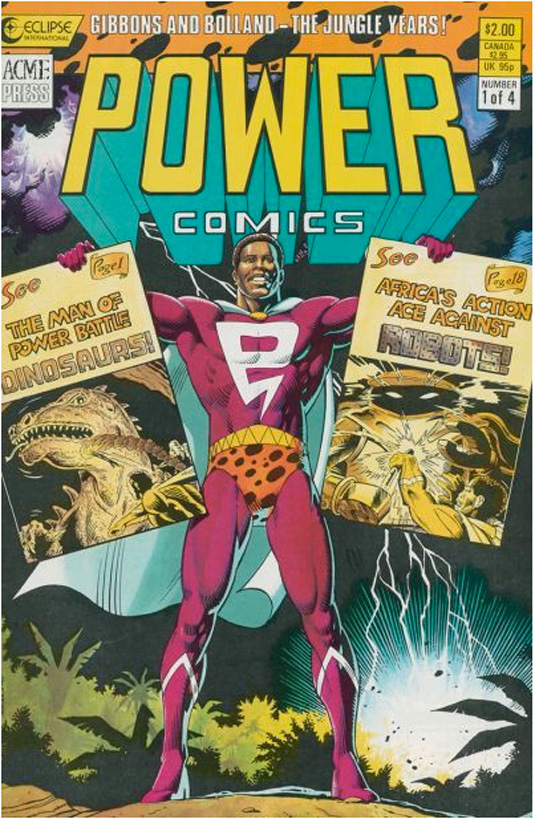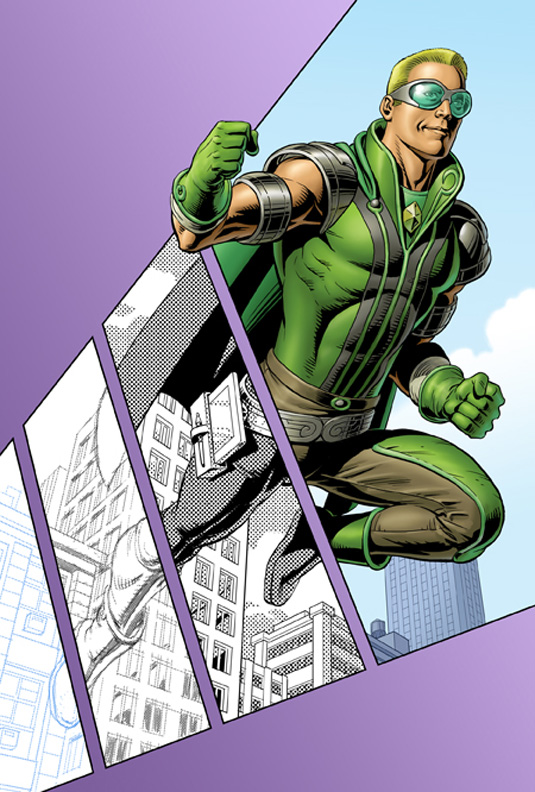INTERVIEW: Watchmen legend Dave Gibbons
Like comics? Then you'll LOVE this awesome in-depth interview with comic book legend Dave Gibbons, in which he reveals everything from his inspirations to what it's like to take a phone call from Stan Lee in your kitchen.
QUESTION: How did the opportunity to work at 2000AD come about? Did you apply for the role as art director?
"I was never art director, somehow this has got on to Wikipedia but I was only ever a freelance artist for 2000AD. It was Robin Smith, who I have worked with, who was the art director at 2000AD for a while.
"In my early days, I worked through an art agent called Bardon Press features. They’d seen my work in fanzines and got me a job at DC Thomson where I really learnt my craft. You’d send in your artwork and they’d return it annotated and corrected so that you told the story clearly, which was really important. As I say, I think I had a natural talent for that but they certainly honed it.
"I was on the station platform one day going up to London and I bumped into a friend of mine called Mick McMahon and he had some artwork under his arm. He told me it was for a new comic that Fleetway publications were doing. It was science fiction and I think it was actually the first Judge Dredd set that ever appeared. He had the pencils of it that he was taking up with him and I thought that this was the kind of comic I’d like to be in.
"So I mentioned it to my agent and I remember him taking me across Blackfriars bridge on the bus to the offices of Fleetway, or IPC magazines as it was then. He introduced me to Pat Mills, who was the editor, I shook his hand and then I was in at 2000AD.
They liked the way thatI drew these flying athletes and that was really mein at 2000AD
"They were looking for someone who could draw the Harlem heroes, who were kind of a flying basketball team basically based on the Harlem globetrotters. They had jet packs so it was called jet ball or sky ball or something like that and I’d actually had some experience in drawing, particularly black, people flying through the air. Not because they fly through the air any differently to white people, but I’d been drawing a thing for a comic called Powerman that appeared in Nigeria. I think the fact that I was able to give it a sort of a superhero gloss meant that they really liked my version of Harlem heroes.
"The previous artist had tried to draw these flying figures realistically but you have to have a certain amount of stylisation otherwise it just looks clunky, it looks like people are being thrown out of aircraft or something like that. So they liked the way that I drew these flying athletes and that was really me in at 2000AD. And that was a big break.
"And it was also a big break because I got to meet my contemporaries and peers. Mike Mahon I already knew, Brian Bolland soon came on board. I got to know Kevin O’Neill and all sorts of people’s names you’d know from 2000AD. It had a real esprit décor about it and we were all mutually inspired to do some of our very best work."

QUESTION: When did you first meet Alan Moore? Why do you think the two of you work so well together?
"I was at a convention in 1980 and a mutual friend of ours called Steve Moore, no relation, introduced us and we chatted a bit. Then I got to see Alan’s work appearing in some of the Marvel comics and doing Future shocks for 2000AD and they were little short twist ending stories and I thought he was a really good writer.
We're obviously different people but we got on fine and had similar ideasabout comics
"I was also doing some short Future shock stories for 2000AD to fill in for other projects and got sent a couple of Alan's scripts. I really enjoyed them and then got to know him socially. There’s was a thing in London called The Society of Strip illustration, which happened once a month and we used to meet up at that. And although we are obviously very different kinds of people, we got on fine and had similar ideas about comics.
"Although I do remember that we had a kind of friendly dispute about who should be allowed into the society, with, I believe, Alan taking the point of view that anybody should be let in but me feeling it should be rather more of a professional qualification - that you should've earned a living from comics for some specified amount of time. Otherwise I just felt it might become a sort of glorified drink-up that anybody vaguely interested in comics could come along to, rather than being a thing that you could meet your peers and other people who are involved in the same industry as you. Anyway it was an amicable dispute and I don’t believe it ever came to any conclusion. I think we were probably both right and both wrong.
Alan is very meticulous in what he writes
"Alan and I have similar backgrounds, we both went to humble little primary schools and both passed our 11-plus, which was a big deal in those times. We'd both gone to quite posh schools where the teachers wore gowns and there were prefects, canings, and blazers, etc. And also, I think our taste in comics is quite similar and we were both quite interested and had done work for the sort of underground press. Alan is very meticulous in what he writes and I think I’m meticulous in what I draw so we both bought an equal level of commitment to things."
QUESTION: What three pieces of advice would you give to anyone who is thinking about drawing for comic books?
"There are three qualities and if you have any two of these three then you will probably be okay as a professional artist. Number one: you have to be really good. If you're really good then you can probably get away with anything. And people will want to employ you.
If you're really good then you can probably get away with anything
"Number two: you have to be really reliable. If the work is needed on Tuesday, you have to get it in on a Tuesday, no excuses. And of course, working in weekly comics is great training for that. And thirdly: just be a nice guy or girl, which means be pleasant and professional to deal with, not get on people’s nerves one way or another.
"Any two of those three - like if you’re really good but have no social skills but you can get the work in on time then that’s good. If you can get it in on time and have social skills but you’re not quite so good you will probably still get work. Any permutation of those two is a fairly good guide I think. If you can be all three, which is of course what we aim to be, then hopefully you will be quite successful and be employed."
QUESTION: How long have you been drawing on a Mac? When did you make the switch from traditional to digital and why?
"I first got a Mac in 1992 to do colouring and various production work on and its very, very useful. I’ve been using it more extensively since about for the last 10 years actually trying to produce artwork on it. First of all, scanning in drawings that I had done traditionally and then adding colour and effects to them. Latterly using them to layout comics, there’s a piece of software called Manga studio, which is tailor made for drawing comics and I find very useful.
I generally find that a combination of traditional and digital is what works the best
"You can rule your pages up in Manga Studio very simply, draw perspective grids, you can import 3D models and photo reference and then I print that out and draw the rest of it in a traditional way, usually. Sometimes I do it all on screen depending on what the purpose is but I generally find that a combination of traditional and digital is what works the best.
"After all, when all said and done, a computer is only a tool - albeit a much more elaborate tool that a pen or a pencil - but really you use a tool as necessary to produce the effect you want. I think we all get excited with new technology and new tools when they come out and think using it is the only way to ever do things. But then after a period of experimentation you realise that everything has its strengths and weaknesses and you find a method of working that suits you best."

Dave tells us more on the following page...

Thank you for reading 5 articles this month* Join now for unlimited access
Enjoy your first month for just £1 / $1 / €1
*Read 5 free articles per month without a subscription

Join now for unlimited access
Try first month for just £1 / $1 / €1
Get the Creative Bloq Newsletter
Daily design news, reviews, how-tos and more, as picked by the editors.

The Creative Bloq team is made up of a group of design fans, and has changed and evolved since Creative Bloq began back in 2012. The current website team consists of eight full-time members of staff: Editor Georgia Coggan, Deputy Editor Rosie Hilder, Ecommerce Editor Beren Neale, Senior News Editor Daniel Piper, Editor, Digital Art and 3D Ian Dean, Tech Reviews Editor Erlingur Einarsson, Ecommerce Writer Beth Nicholls and Staff Writer Natalie Fear, as well as a roster of freelancers from around the world. The ImagineFX magazine team also pitch in, ensuring that content from leading digital art publication ImagineFX is represented on Creative Bloq.
